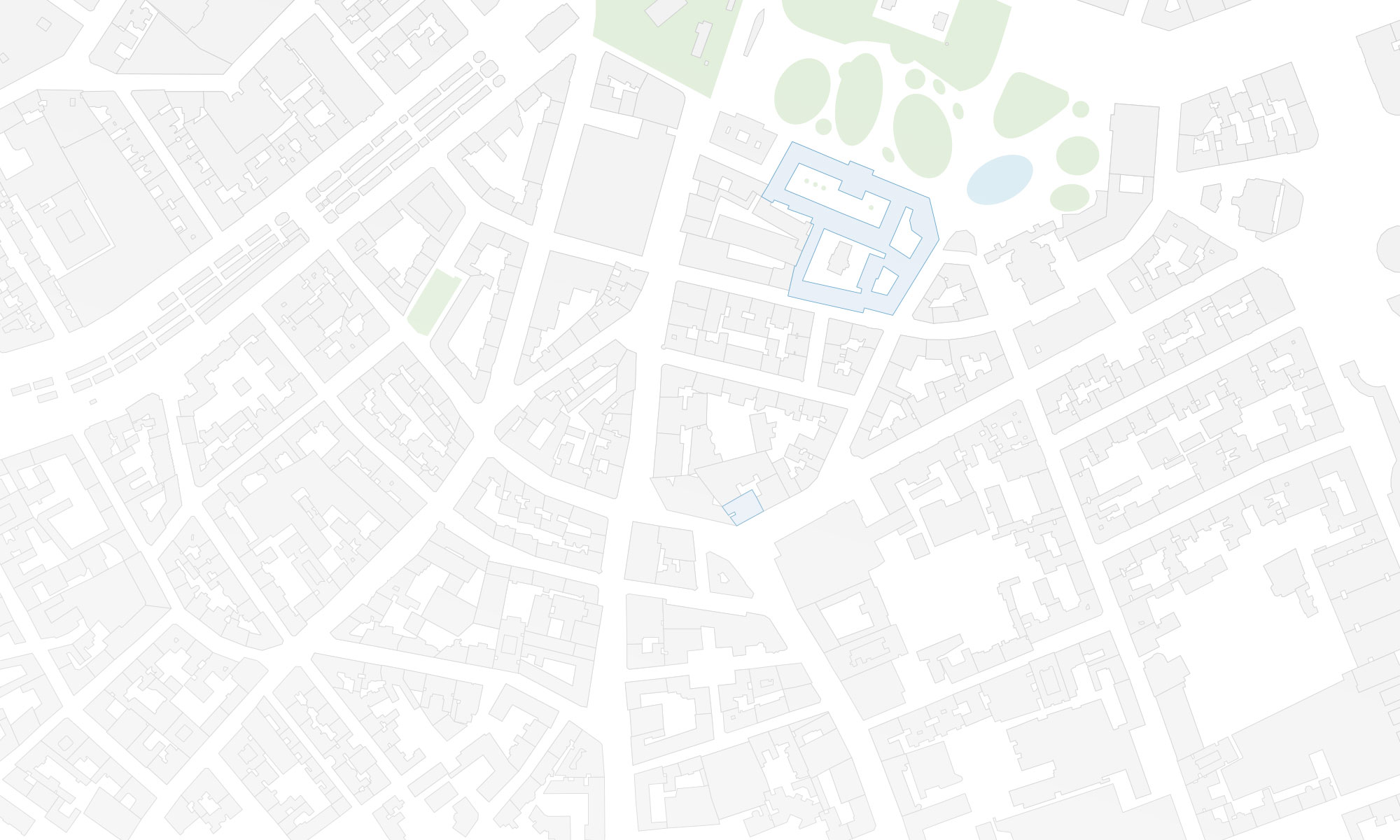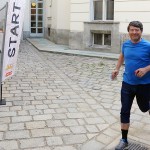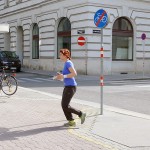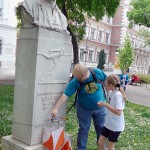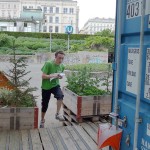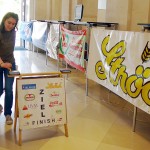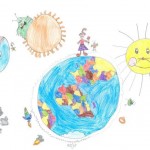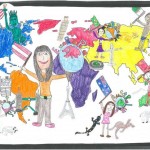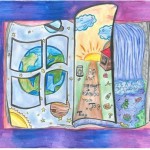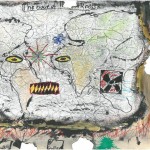Thank you for your interest. We filled the vacancy.
Nachschau des TU200-Orientierungslaufs
Anlässlich des 200-Jahr-Jubiläums der Technischen Universität Wien organisierte die Forschungsgruppe Kartographie des Departments für Geodäsie und Geoinformation gemeinsam mit dem Orientierungslaufverein OL Ströck Wien einen Orientierungslauf rund um das Hauptgebäude der TU Wien. Bei bestem Wetter nahmen mehr als 100 TU-KollegInnen daran teil.
Viele davon versuchten sich erstmals im Orientierungslauf. Beinahe alle wurden schon bald vom OL-typischen Ehrgeiz gepackt, die auf einer extra angefertigten Orientierungslaufkarte im Maßstab 1:3.000 eingezeichneten Kontrollposten möglichst rasch zu finden. Dabei mussten Innenhöfe durchquert werden, Routenwahlen getroffen werden und die an diversen TU-relevanten Punkten angebrachten Kontrollpunkte durch einen am Finger angebrachten Chip ausgelöst werden.
Die schnellsten Laufzeiten durch Alexander Berger (Physik), Martin Pongratz (Elektrotechnik) und Franz Glaner (Geodäsie und Geoinformation) betrugen knapp über 5 Minuten. Diese Läufer sind allerdings “Orientierungslaufprofis”, wie es generell erstaunlich viele TU-Angehörige gibt, die Orientierungslauf betreiben. Vielleicht ist die Kombination aus physischer und mentaler Herausforderung dabei besonders attraktiv.
Die besten Läufer unter jenen, die OL zum ersten Mal betrieben haben, waren:
Damen:
- Lydia Jahn (E226) 7:54
- Anita Gerstenmayer (ASC) 8:38
- Aleksandra Draksler (E120/6) 10:10
Herren:
- Andreas Bauernfeind (KUS ÖBV) 5:11
- Benedikt Regner (Student) 6:17
- Matus Trnovec (Eletrotechnik) 7:01
Teams:
- SC 42 Kitzbühel 7:04
- E206/4 7:15
- E230, DK URBEM 8:27
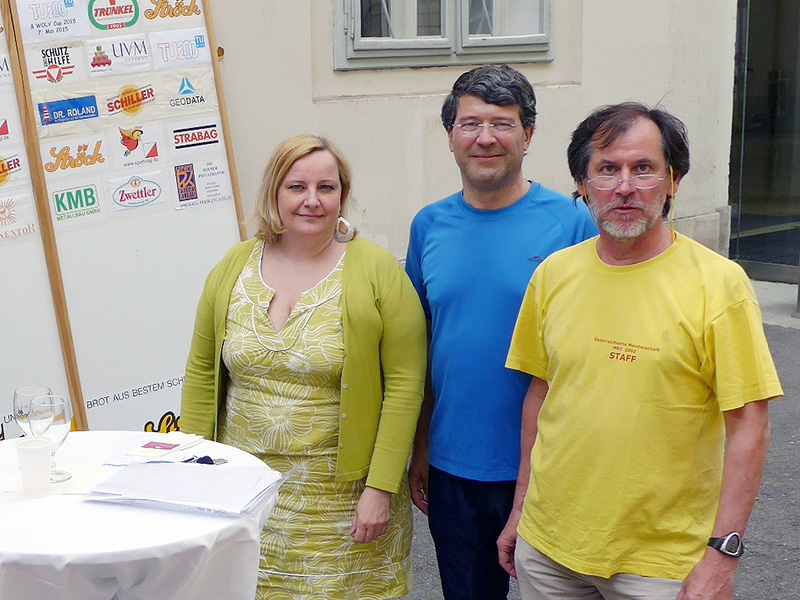
Fotos: © Paul Grün, weitere Bilder | detaillierte Ergebnisse
CartoTalk Eleonora Ciceri: Humans in the loop – Optimization of active and passive crowdsourcing
We invite you to our next CartoTalk by Eleonora Ciceri from Politecnico di Milano.
Abstract: Humans in the loop: Optimization of active and passive crowdsourcing Abstract: Crowdsourcing has become a hot topic in the last years: many companies base their core business on it and computer scientists study how to optimize it. Yet, there still are unsolved questions that need to be answered. On the one hand, in an active crowdsourcing context (i.e., the one in which workers actively contribute by solving tasks on crowdsourcing marketplaces) there is the need of identifying among all the possible tasks the ones that are useful (i.e., which ones bring additional knowledge and information) and discard the others. On the other hand, in a passive crowdsourcing context (i.e., the one in which we analyze user-generated content), if someone is in need of identifying topic-related content and influencers (i.e., people that influence other users in thoughts and actions), it is important to identify content features and users behaviors that an automatic pipeline could exploit to find relevant content and influential users without the help of humans. In this brief seminar, we will discuss what crowdsourcing really is, and we will cover these aspects, presenting some of the results that we achieved with our research.
Eleonora Ciceri is a Post-Doc researcher at Politecnico di Milano, Italy. She had a BSc degree in 2009, an MSc degree in 2011, and a doctoral degree in Computer Science Engineering at Politecnico di Milano. Her research interests are top-K query processing, social media, crowdsourcing, human computation and multimedia.
Friday, 8 May 2015, 14:00
Forschungsgruppe Kartographie
Seminarraum 126
Master-Präsentation von Manuela Stögerer
Manuela Stögerer hat am 21. April erfolgreich ihre Masterarbeit “Einfluss von Interpretationshilfen auf die Benützung von komplexen interaktiven thematischen Karten” verteidigt. Der Volltext der Arbeit kann in der TU-Online-Bibliothek heruntergeladen werden; eine Zusammenfassung der Ergebnisse findet sich in dem Präsentationsfile ihrer Diplomprüfung.
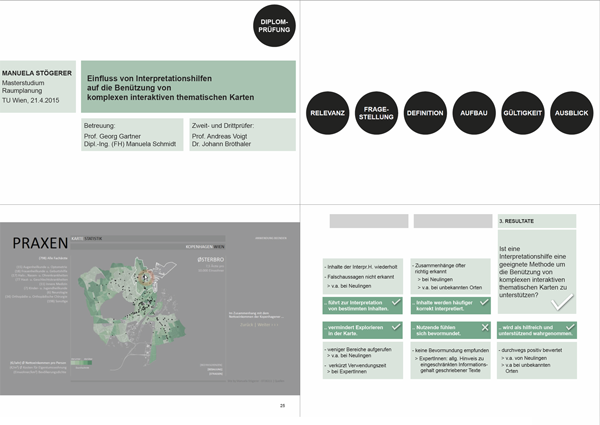
Wir gratulieren Manuela Stögerer zu ihrer gelungenen Arbeit!
Einladung zum TU-Orientierungslauf
Anlässlich des 200-jährigen Jubiläums der Technischen Universität Wien organisiert die Forschungsgruppe Kartographie und die OL-Gruppe Ströck-Wien am Donnerstag, dem 7. Mai 2015, einen Orientierungslauf rund um das TU-Hauptgebäude und im Resselpark.
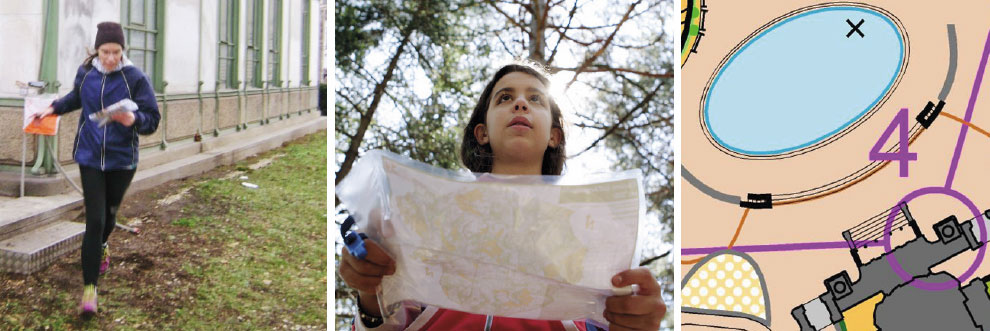
Was ist eigentlich Orientierungslauf?
Orientierungslauf, meist kurz OL genannt, ist eine Laufsportart. Dabei müssen mit Hilfe von Landkarte und Kompass mehrere Kontrollpunkte in der richtigen Reihenfolge gefunden werden. Die Wahl der Route zwischen den Kontrollpunkten ist den LäuferInnen überlassen. Orientierungslauf fördert damit nicht nur die körperliche, sondern auch die geistige Fitness.
Weitere Infos zu Orientierungslauf in Österreich finden Sie unter oefol.at
Hier die wichtigsten Infos für den TU-Orientierungslauf
- Jede und jeder kann mitmachen!
- Institute sind eingeladen, Teams zu entsenden. Teilnehmen können Zweiergruppen und Einzelpersonen.
- Für Neulinge stehen vor dem Lauf erfahrene OL-LäuferInnen für eine Einschulung bereit.
- Empfohlen werden Laufbekleidung und Laufschuhe.
- Wer nicht kompetitiv laufen möchte, kann auch gehen – entscheidend ist es, die Kontrollposten in der richtigen Reihenfolge zu finden; da kann zu schnelles Tempo sogar hinderlich sein.
- Die Anmeldung erfolgt direkt vor Ort im TU-Hauptgebäude. Sie können zwischen 14.30 und 17 Uhr starten. Der Zeitbedarf für den Lauf beträgt voraussichtlich zwischen 15 und 30 Minuten.
- Die Siegerehrung findet ab 17:15 Uhr im Innenhof des TU-Hauptgebäudes statt.
Wann: 7. Mai 2015, ab 14.30 Uhr
Treffpunkt: TU-Hauptgebäude, Karlsplatz 13, Prechtlsaal
Eine PDF-Version der Einladung zum Ausdrucken kann hier heruntergeladen werden.
Wir freuen uns auf Sie!
Ergebnisse des österreichischen Barbara-Petchenik-Wettbewerbs
Am 13. März fand an der Forschungsgruppe Kartographie die Jury-Sitzung für die österreichische Runde des Barbara-Petchenik-Wettbewerbs statt. 332 SchülerInnen von 20 Schulen hatten insgesamt 267 Karten eingereicht. Wir freuen uns über das rege Interesse und die Vielzahl spannender Einreichungen.
Für jede Altersgruppe wurden die besten Zeichnungen ausgewählt. Dabei wurde berücksichtigt, ob die Karte dem Rahmenthema des Wettbewerbs („My place in today’s world“) sowie dem selbstgewählten Titel entspricht. Auch die altersgemäße Gestaltung von Inhalt und kartographischen Elementen floss in die Entscheidung ein.
Beiträge für die internationale Runde
Die folgenden sechs prämierten Beiträge wurden für die internationale Runde des Wettbewerbs nominiert. Damit werden sie bei der Internationalen Kartographischen Konferenz in Rio de Janeiro im August diesen Jahres ausgestellt.
Eine vollständige Liste der Ergebnisse des österreichischen Wettbewerbs findet sich auf cartography.tuwien.ac.at/bpetchenik. Continue reading “Ergebnisse des österreichischen Barbara-Petchenik-Wettbewerbs”
Invitation to the 1st ICA European Symposium on Cartography
 We are very pleased to invite you to the 1st ICA European Symposium on Cartography (EuroCarto 2015), which will take place in Vienna on November 10–12, 2015.
We are very pleased to invite you to the 1st ICA European Symposium on Cartography (EuroCarto 2015), which will take place in Vienna on November 10–12, 2015.
EuroCarto 2015 aims at bringing together cartographers, GI scientists and those working in related disciplines with the goal of offering a platform of discussion, exchange and stimulation of research and joined projects.

The Call for Papers is currently open. The deadline for full paper submissions is June 1, 2015; work in progress can be submitted until June 29, 2015. High-quality submissions are intended to be published in the International Journal of Cartography and in a book of the series Lecture Notes on Geoinformation and Cartography by Springer.
Please feel free to distribute the CfP to your network and contacts.
Further details can be found on the symposium website: eurocarto.org We are looking forward to your contributions and to meeting you in Vienna!
With kind regards,
Georg Gartner
Anna Vetter won the 2015 swisstopoEDU-MSc promotion programme
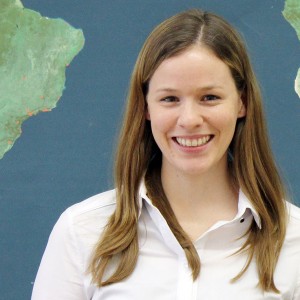
Anna Vetter, alumni of the second intake of the International Master of Cartography, won the 2015 swisstopoEDU-MSc promotion programme for her thesis The automatic generalisation of buildings whilst maintaining the settlement structure: A case study based on the 1:50‘000 Swiss National Map Series, which she wrote in collaboration with swisstopo, ESRI Switzerland and the Research Group Cartography. Congratulations, Anna!
More about the swisstopoEDU-MSc promotion programme can be found here: swisstopo.admin.ch
Master thesis presentation on 26.2.2015
On February 26, Anna Makrostergiou, student of the International Master of Cartography (2nd intake), presented her master thesis on the topic of Artistic Decorations in Early Modern Cartography: A Study Case of Maps of the Dutch Golden Age. A poster of her thesis can be found here.
Congratulations, Anna!
Bachelor presentation on 13.2.2015
We invite you to the bachelor presentation of Veronika Priesner on the topic of Web Map Personalization with a Focus on Points of Interest Recommendation Generation.
Time: Friday, February 13, 2015, 10:00
Place: Forschungsgruppe Kartographie, Seminarraum 126
We are looking forward to seeing you!
